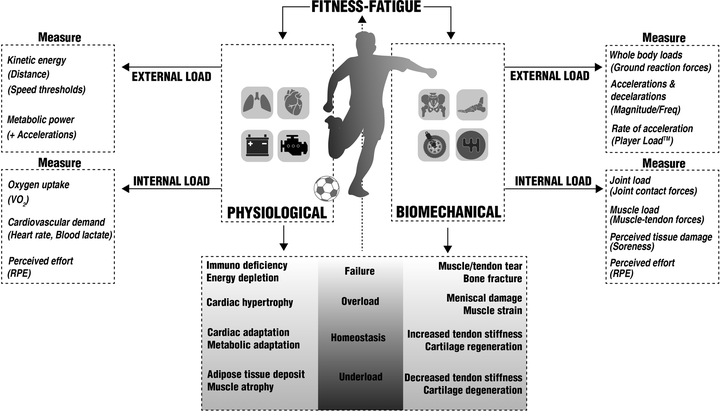Training Load Monitoring in Team Sports: A Novel Framework Separating Physiological and Biomechanical Load-Adaptation Pathways

Abstract
There have been considerable advances in monitoring training load in running-based team sports in recent years. Novel technologies nowadays offer ample opportunities to continuously monitor the activities of a player. These activities lead to internal biochemical stresses on the various physiological subsystems; however, they also cause internal mechanical stresses on the various musculoskeletal tissues. Based on the amount and periodization of these stresses, the subsystems and tissues adapt. Therefore, by monitoring external loads, one hopes to estimate internal loads to predict adaptation, through understanding the load-adaptation pathways. We propose a new theoretical framework in which physiological and biomechanical load-adaptation pathways are considered separately, shedding new light on some of the previously published evidence. We hope that it can help the various practitioners in this field (trainers, coaches, medical staff, sport scientists) to align their thoughts when considering the value of monitoring load, and that it can help researchers design experiments that can better rationalize training-load monitoring for improving performance while preventing injury.